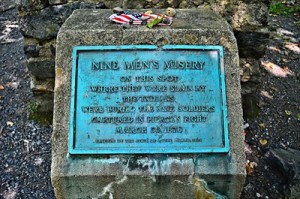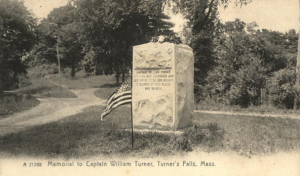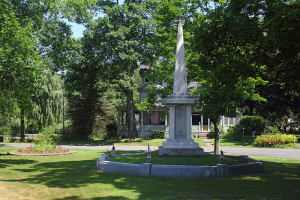Memory & Legacy
The Memory and Legacy of King Philip’s War (1675-1676)
King Philip’s War remains one of the most significant series of events in Colonial and Native history in the United States. The war lasting over a little more than two years forever changed the political and social geography locally and nationally.
Native peoples, historians and local town members from all over New England commemorate those that served in King Philip’s War and the battles by erecting monuments and preserving town and family histories.

“Nine Men’s Misery” stone marks the place where nine English soldiers were tortured after being captured March 26, 1676 during Pierce’s Battle. Cumberland, Rhode Island.
The Mashantucket Pequot Museum & Research Center with the support of community members are working to identify artifacts and histories associated with King Philip’s War and to build a community-based battlefield preservation plan for archaeological sites to inform and educate the public of its history, legacy and significance in America’s History.

Turner’s Falls Monument commemorating the Turners Falls Battle May 19, 1676. Montague, Massachusetts.

John Eliot Speaks to the Natick Indians hangs in the Natick post office; depicts the deportation of the Natick Praying Indians from their homes to Deer Island. Despite their internment, the men of Natick continued to serve as scouts and rangers for colonial forces.

The Bloody Brook Monument marks the place where Captain Lathrop and his men were ambushed while escorting supplies being evacuated from Deerfield, Massachusetts. The monument is a tribute to the forty-two English men who were killed in the fighting.

The Rhode Island Historical Society placed this stone in 1877 to mark where King Philip was killed in Misery Swamp on Mount Hope. Philip was shot by a praying Indian named John Alderman who served in Benjamin Church’s Ranger regiment.

